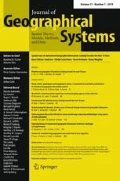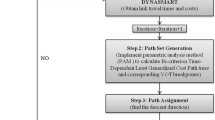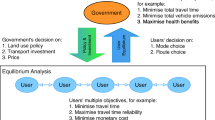Abstract.
Whereas for commuting travel there is a one-to-one correspondence between commuters and jobs, and for commodity flows a one-to-one correspondence between the size of orders and the shipping cost of the commodities, the situation is much more complex for retail/service travel. A typical shopper may make a single trip or multi-stop tour to buy/consume a quite diverse set of commodities/services at different locations in quite variable quantities. At the same time, the general pattern of the tour is clearly dependent on the activities and goods available at potential stops. These interdependencies have been alluded to in the literature, especially by spatial economists. However, until some preliminary work by the first author, there has been no attempt to formally include these interdependencies in a general model. This paper presents a framework for achieving this goal by developing an evolutionary set of models starting from the simplest forms available. From the above, it is clear that such interdependency models will inevitably have high dimensionality and combinatorial complexity. This rules out a simultaneous treatment of all the events using an individual choice approach. If an individual choice approach is to be applied in a tractable manner, the set of interdependent events needs to be segmented into several subsets, with simultaneity recognised within each subset, but a mere sequential progression occurring between subsets. In this paper, full event interdependencies are retained at the expense of modelling market segments of consumers rather than a sample of representative individuals. We couple the travel and consumption events in the only feasible way, by modelling the tours as discrete entities, in conjunction with the amount of each commodity consumed per stop on each such tour in terms of the continuous quantities of microeconomics. This is performed both under a budget/income constraint from microeconomics and a time budget constraint from time geography. The model considers both physical trips and tele-orders.
Similar content being viewed by others
Author information
Authors and Affiliations
Additional information
Received: 14 August 2000 / Accepted: 6 October 2001
Rights and permissions
About this article
Cite this article
Roy, J., Smith, N. & Xu, B. Simultaneous modelling of multi-purpose/multi-stop activity patterns and quantities consumed. J Geograph Syst 3, 303–324 (2001). https://doi.org/10.1007/s101090100065
Issue Date:
DOI: https://doi.org/10.1007/s101090100065




